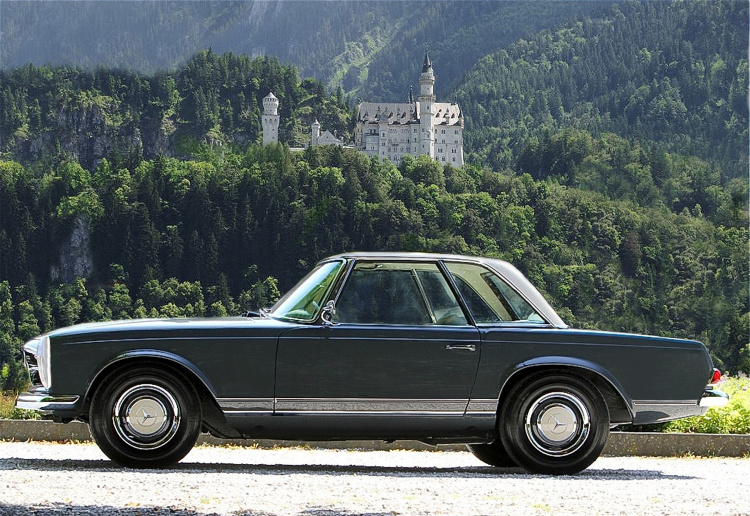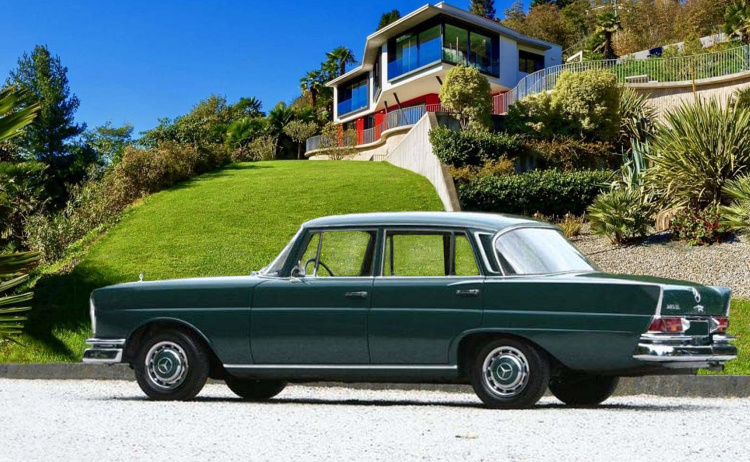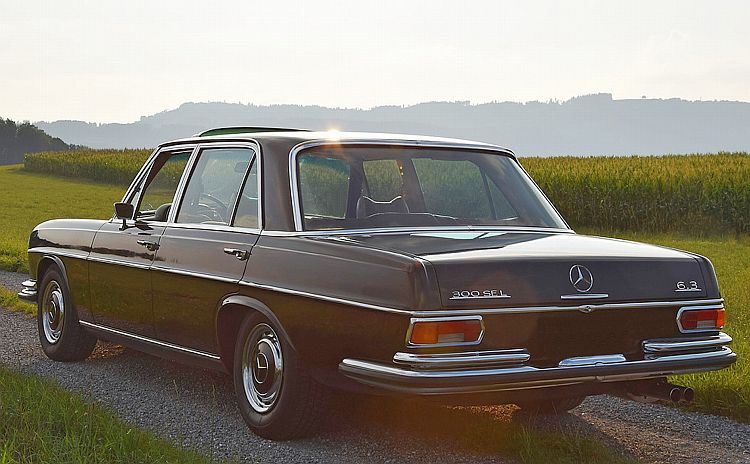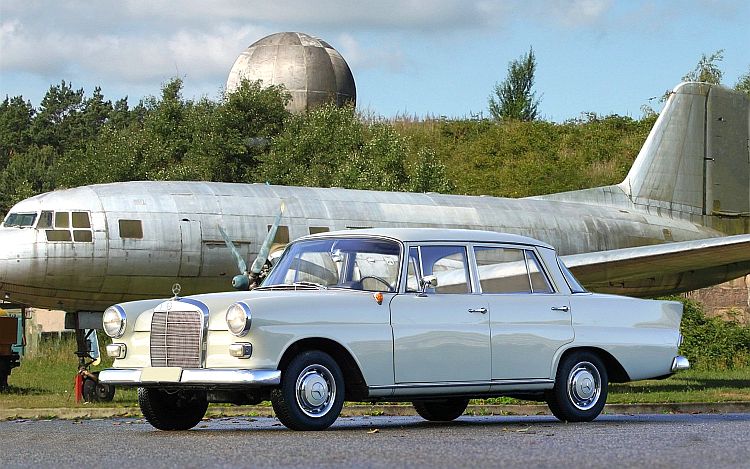Mercedes W108, W109 six-cylinder, 1960s elegance
Mercedes W108 six-cylinder: The elegant 250S, 250SE and 300SE all debuted at the 1965 Frankfurt Auto Show as successors to the W111 and W112 series “fintail” cars. All three shared the same body, designed by a team led by Paul Bracq. The aim of the development was to maintain the exterior dimensions while increasing the passenger compartment. At the same time the driving performance, driving comfort and driving safety should be improved. In addition, the car was lowered by six cm, giving it a lower center of gravity than the fintail models.
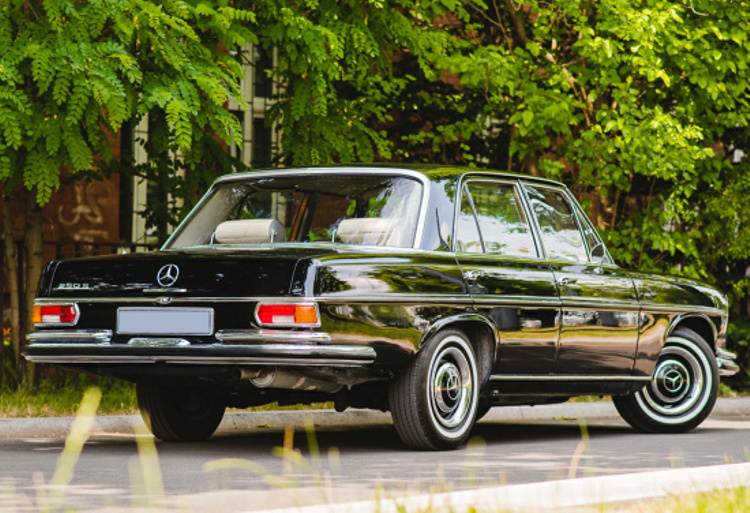
The frame floor system remained largely the same. The slightly curved windows allowed the use of thinner doors. This resulted in 90 mm more space at the front and 70 mm at the rear. The windows were enlarged to give passengers a better all-round view.

The internal code W108 referred to the steel-sprung 250 and 300 (and later 280) series. The longer 300SEL with air suspension was designated W109. Underneath, the W108 had a lot in common with the W111 it replaced. The suspension featured double wishbones, coil springs, dampers and torsion bar stabilizers up front. A version of Daimler-Benz’s tricky swing axle was still used at the rear. With a single pivot point on the passenger side of the differential, each wheel could hypothetically travel through an arc with the longest possible radius. This should minimize tuck-in and other exciting behavior during abrupt transitions. Nevertheless, a hydro-pneumatic compensating spring was mounted at the joint, along with coil springs and shock absorbers.
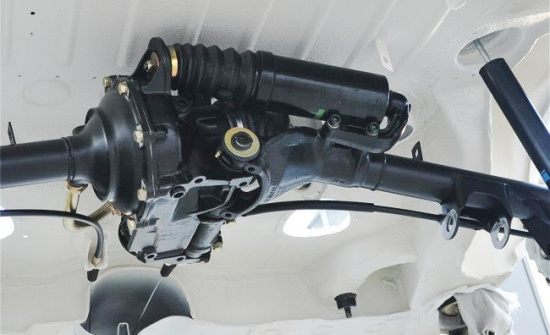
The new hydro-pneumatic compensating spring
The 300SE Mercedes W108 was now just a 250SE with a larger engine
The former W112 300SE, now called 300SEb, had been downgraded to the same chassis as the W108. The air suspension was now, as already mentioned, reserved for the longer version offered from March 1966. The interior was also less luxurious. The only feature that distinguished the 300SE from its cheaper 250-series siblings was the standard power steering.
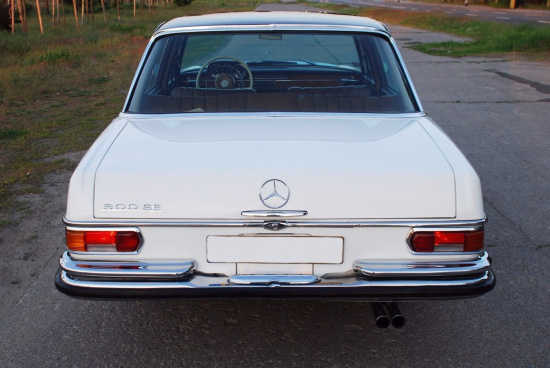
The 300SE was not anymore equipped with air suspension
The 2.5-liter, OHC inline-six was developed from the 2.2-liter aggregates by reboring them and increasing the stroke of the piston. Other measures were a bump in compression, larger valves and improved airflow. This resulted in 130 hp in the 250S’s twin Zenith “M108” engine with a 9.0:1 compression. The 250SE’s Bosch fuel-injected “M129” engine produced 150 hp at 9.3:1 compression. Both engines featured seven main-bearing cranks, and a double-roller timing chain. They also had an identical 2,496 cc displacement. The fuel injected SE models included an upgraded 55Ah battery.
The 3-liter aluminum engine was virtually unchanged from its W112 predecessor. It was mounted slightly lower in the new body and had a flatter oil pan and adjusted pump.

The 300SE alloy engine could be traced back to the 300d Adenauer
As in the W112, the M189 engine produced 170 hp at 5,400 rpm and a maximum torque of 261.7 Nm (193.0 ft/lb) at 4,000 rpm. Customers could choose between a 3.92:1 (standard) or a 3.69:1 final drive ratio. The latter was necessary for the car to reach its advertised top speed of 200 km/h. If people complained about the fuel consumption of the 2.5-liter versions, they had not yet experienced the 300SE. It was even worse. The car did not accelerate much faster, nor was it that much faster than the 250SE. But with an average consumption of 21 l/100 km (11 US mpg, 13.2 imp. mpg) it used even more fuel and its light alloy engine produced slightly more noise under comparable driving conditions.
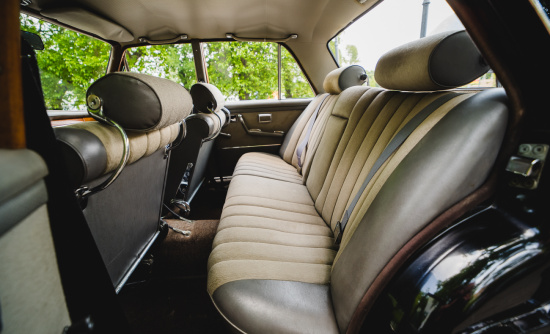
The interior was roomier and lighter
The wider interior was sleek and functional. The optional larger single center armrest in the front was replaced by two thinner, separate armrests. This was done to increase comfort for the individual passenger. A seat cushion between the two front seats was again available to accommodate a third passenger if the car was equipped with a column shifter. For the first time, the height of the driver’s seat could be adjusted using a lever on the left side of the seat. To protect the outer sides of the seats from premature wear, they had vinyl edges.
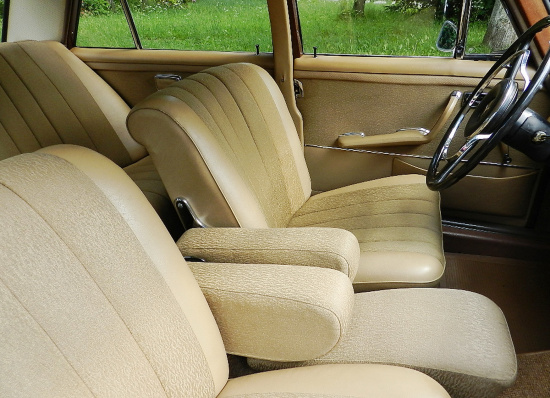
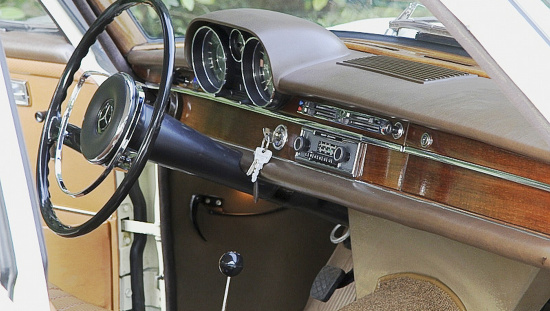
Finally, the instrument layout was again more traditional with two large round instruments for speed and various control functions. A small one housed the clock. An elegant looking chrome strip ran along the upper half of the dashboard. It separated the “working area” with control knobs for heating and lighting from the lower area. This housed the radio, ignition and the two small chromed air vents, a carry-over from the W111. They were in 1966 replaced by larger, more effective plastic ones. If no radio was ordered, the space was covered with a wooden panel. It also carried a smaller version of the trunk lid badge.

The Mercedes W108 with 2.8-Liter engine was the most popular of the series
Production of the 300SE and 250SE ended in December 1967 and January 1968 respectively. The 250S was sold as a new entry-level executive car until March 1969. Its successors, the 280S and 280SE, were introduced in November 1967. They became available in January of the following year.

The 280S and SE were seen in the 1960s as the ideal executive cars
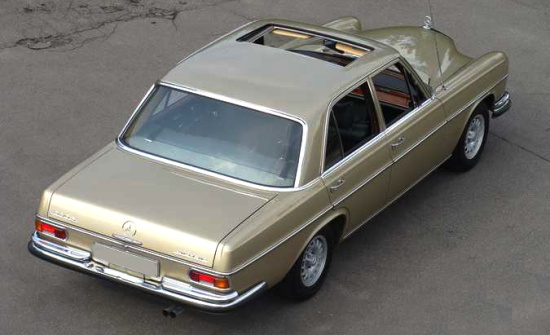
There was no reason to change the body or interior design (except for new fabrics) after such a short time. But the 2.8 L (170.9 cu in) M130 engine was a big improvement. Its larger displacement was achieved by enlarging the bore by 4.5 mm (0.18 in) to 86.5 mm (3.39 in). This pushed the limits of the venerable M180 cast iron block though. Paired cylinder castings without coolant passages were one of the design changes. An oil cooler was required, located next to the radiator. The stroke of 78.8 mm (3.10 in) remained unchanged. The new engine was offered again in two versions. A twin carburetor for the 280S with 140 hp and a fuel injected version for the 280SE with 160 hp. The M108 engine of the 250S underwent some minor changes and was redesignated the M114. It was also used as the 250 in the /8 model. Equipped with a Bosch D-Jetronic it was even used in the 250CE.
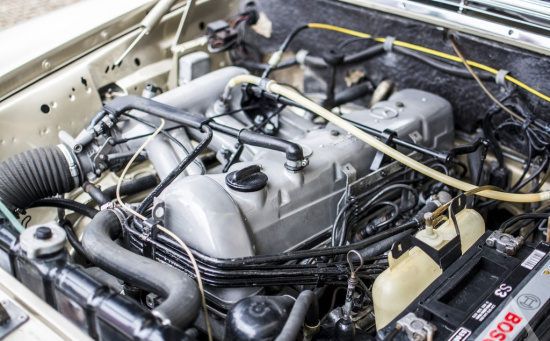
The 280SE engine was smoother than its 2.5-liter predecessor
In January 1968 a more powerful version of the fuel injected engine with a sharper camshaft and 170 hp replaced the 3.0-liter light alloy engine in the 300SEL. It was only a brief appearance, as it was replaced by the 3.5-liter V8 engine towards the end of 1969.


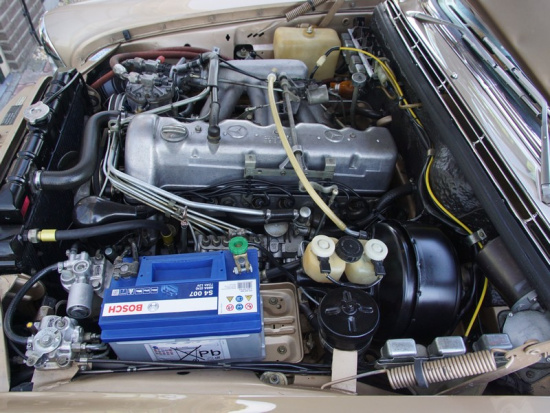
In 1969 the 2.8 liter engine was already history
An extended version was introduced in 1968
Also in January 1968, a Mercedes W108 body, extended by ten centimeters, became available as the 280SEL. It was offered without any changes in technology or equipment over the standard 280SE. The only difference was the standard power steering. The doors of the W108 long version differed from those of the W109 in the way the chrome strips were attached to the window frames and the A-pillar.
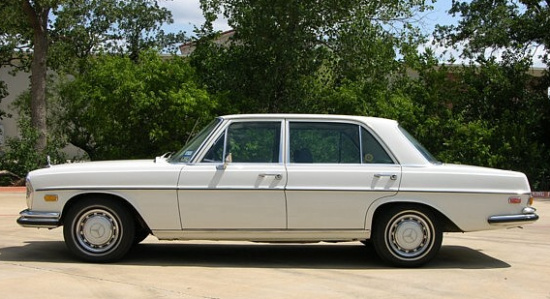
The 280SEL was popular in the US
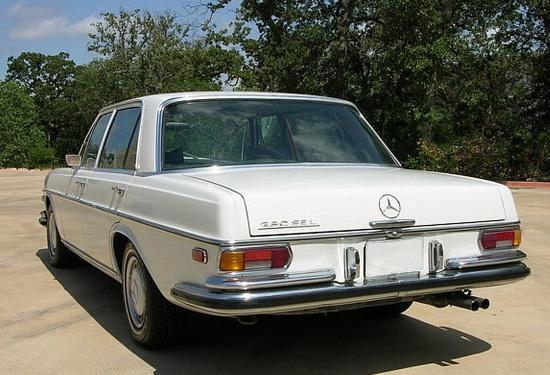
On the automatic versions the selector on the center lever changed in 1968. The parking position P was initially at the rear, but in 1968 it was moved to the front, as was common practice. The steering wheel selector of the automatic was rarely chosen as an option because it was considered outdated.
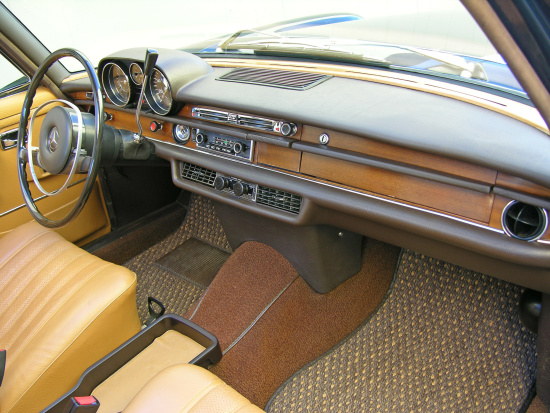
An early 1968 model with optional power window buttons still at the door panel

Later in 1968 the center console was changed and accomodated the optional window buttons
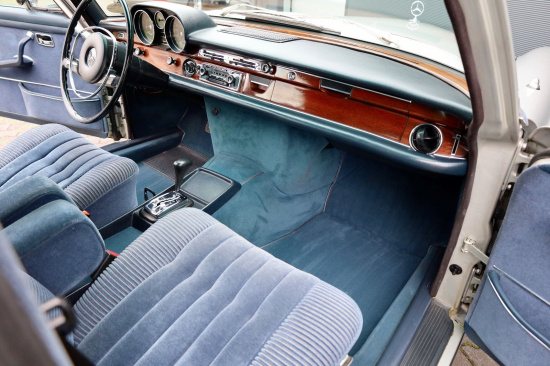
Here you can see the updated automatic transmission gate

In the summer of 1972, production of the Mercedes W108 2.8-liter six-cylinder models was discontinued. A more modern successor in the form of the W116 was eager to show its merits as the first officially named S-Class. Here is a sales breakdown by model:
- 250S: 74.677
- 250SE: 55.181
- 300SE: 2.737
- 300SEL: 2.369
- 280S: 93.035
- 280SE: 91.051
- 280SEL: 8.250
- 300SEL 2.8: 2.519
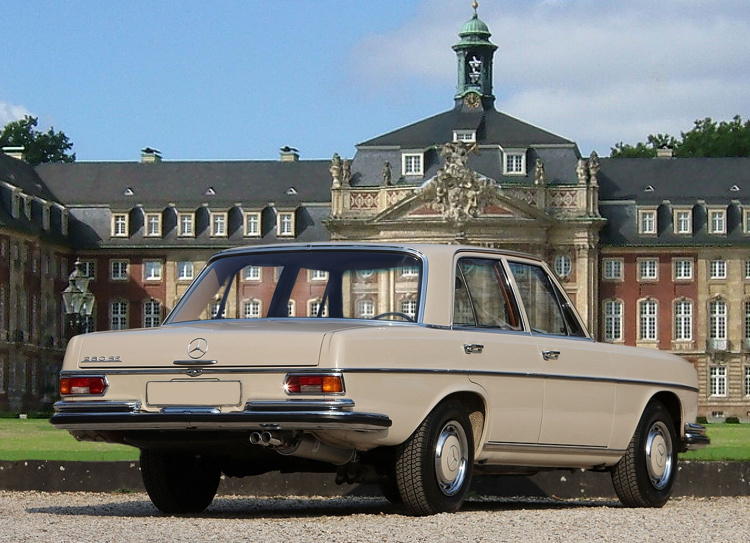
If you want to read more about the Mercedes W108 and W109 six-cylinder models from the 250S to the 300SEL 2.8, here is the link to my book and e-book. It also includes a comprehensive buyer’s guide, explains the chassis number and data card in detail, and offers many new color photos, including the suspension. I am sure you will enjoy reading it.
The link above will take you to the US Amazon site. The book title is the same on Amazon in other countries. A German version of this book is available here.

